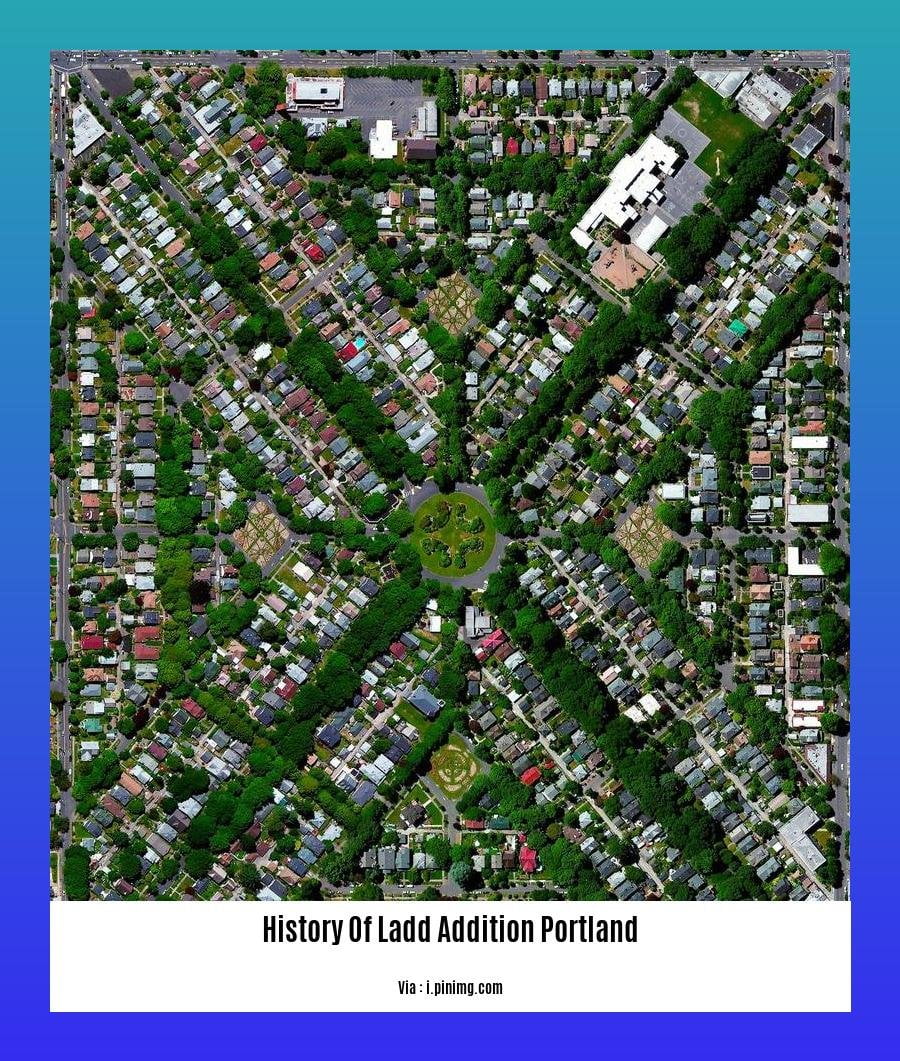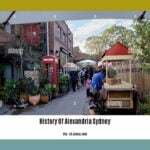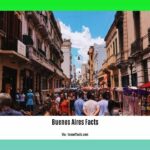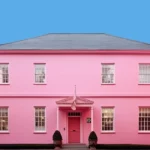Embark on an enlightening journey through time as we explore the intriguing history of Portland’s Ladd Addition. Named after its visionary developer, William S. Ladd, this neighborhood holds a captivating narrative that unveils the city’s past and present. Join us as we delve into the events, characters, and architectural marvels that have shaped Ladd Addition into the vibrant and cherished community it is today.
Key Takeaways:
- Ladd’s Addition is the oldest planned residential area in Portland and one of the oldest in the western U.S.
- Its diagonal street pattern sets it apart from the city’s grid layout.
- The neighborhood’s founder, William S. Ladd, created it by subdividing his farm in 1891.
- American Elm trees line the streets, protected by the Save Our Elms organization.
- Four rose test gardens are situated in diamond-shaped circles at the district’s corners.
History Of Ladd Addition Portland
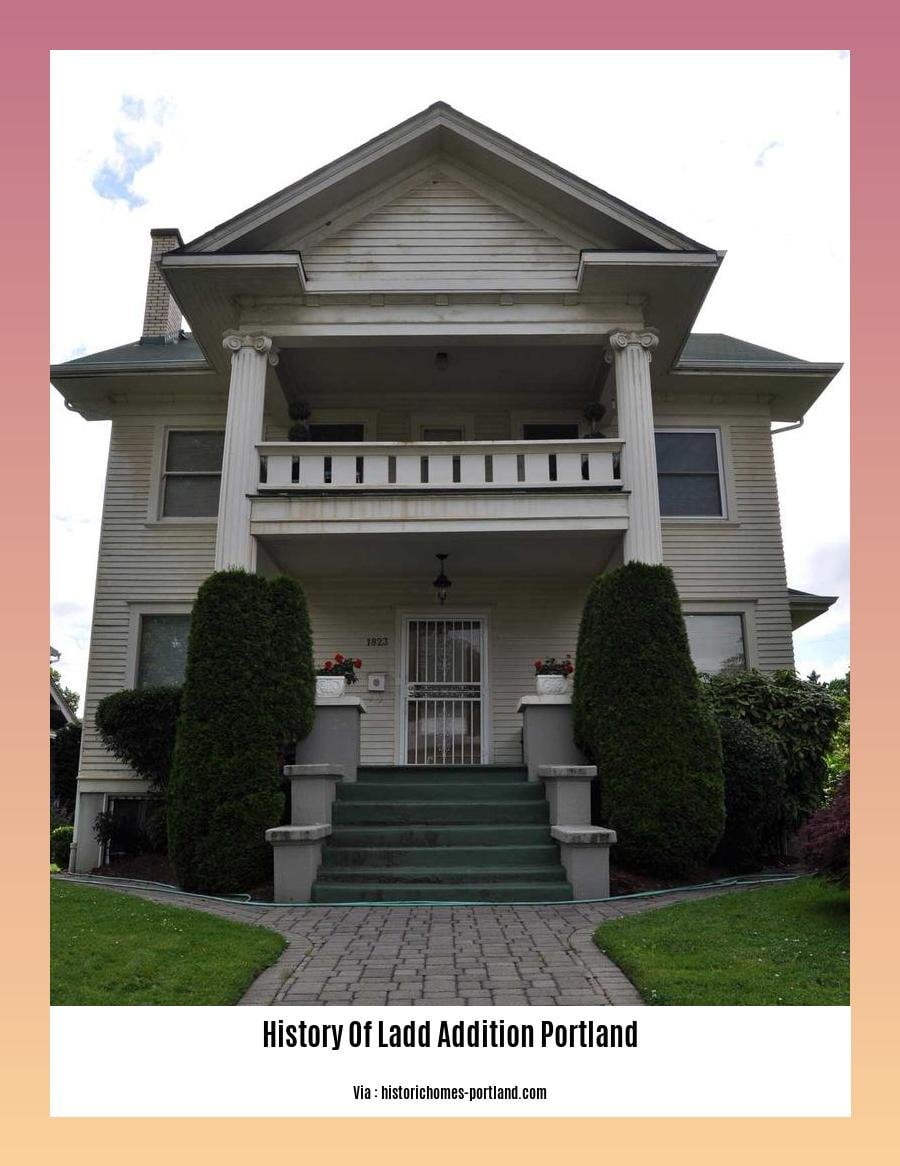
William S. Ladd, a 19th-century Portland mayor, founded Ladd addition in 1891 by subdividing his 126-acre farm into residential plots. And thus, Portland’s oldest planned residential development was born.
Here are some intriguing facts about Ladd Addition:
The distinct diagonal street pattern: Unlike the grid layout common in Portland, Ladd Addition’s streets intersect at 45-degree angles. This unique design was inspired by the “City Beautiful” movement, which sought to create more aesthetic and harmonious urban environments.
American Elm Trees: The neighborhood is adorned with American Elm trees, a prominent feature that contributes to its charm. The Save Our Elms organization diligently inoculates these trees annually to protect them from Dutch elm disease.
Rose Test Gardens: Ladd Addition is graced by four rose test gardens, situated in diamond-shaped “circles” at the corners of the district. These gardens showcase a vibrant array of roses, adding a touch of color and fragrance to the neighborhood.
Ladd Addition’s rich past and distinctive character invite exploration and discovery.
Are you curious about the history of Laddsworth and how it came to be?
Delve into the History Of Ladders, a captivating journey through time, innovation, and the evolution of an indispensable tool.
A Community Takes Root
In the tapestry of Portland’s past, Ladd’s Addition stands as a vibrant thread, a testament to the indomitable spirit that built this city. William S. Ladd, a visionary merchant and former mayor, left an enduring mark on Portland’s landscape when he transformed his farmland into a thriving residential community in 1891.
At the heart of Ladd’s Addition is its unique “wagon wheel” street layout, reflecting the City Beautiful movement’s ideals of harmony and aesthetics. The neighborhood’s charm is further enhanced by towering American Elm trees, guardians of its history and symbols of its deep connection to nature.
But Ladd’s Addition was more than just a neighborhood; it was a melting pot, a place where Italian American immigrants found a welcoming home. In the early 20th century, the neighborhood thrived as a hub of community and commerce.
Key Takeaways:
- William S. Ladd’s vision shaped the unique character of Ladd’s Addition.
- Its “wagon wheel” street layout reflects the City Beautiful movement’s principles.
- American Elm trees symbolize the neighborhood’s enduring legacy.
- Ladd’s Addition became a vibrant community for Italian American immigrants.
Citation:
- Ladd’s Addition – The Oregon Encyclopedia
- Ladd’s Addition – Wikipedia
Neighborhood in Flux: A Glimpse into Ladd’s Addition’s Unfolding Legacy
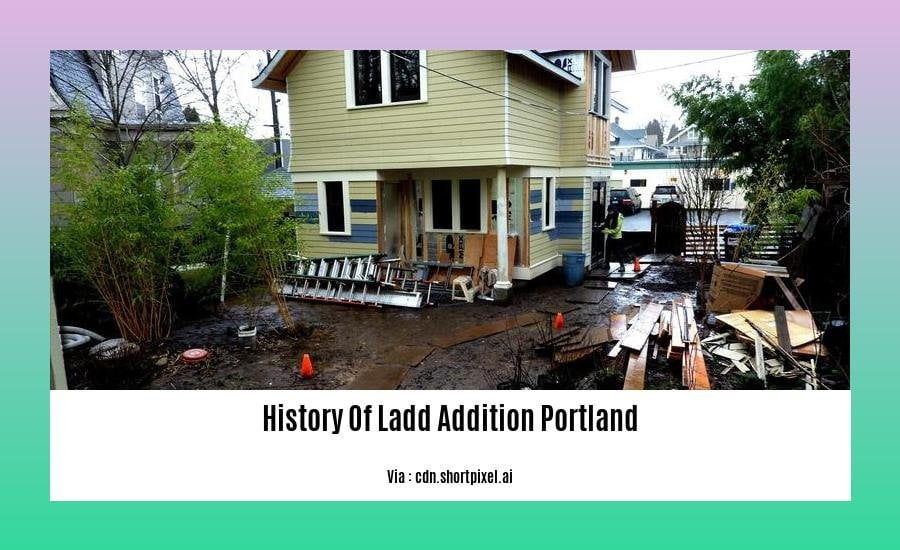
Imagine a neighborhood where the past and present interweave seamlessly. Where stately Victorian homes stand alongside modern apartment buildings, and the echoes of history linger in the air. Such is Ladd’s Addition, a neighborhood in the heart of Portland that has undergone a remarkable transformation over the years.
A Legacy of Innovation:
William S. Ladd, a prominent banker and mayor of Portland, envisioned Ladd’s Addition as a residential haven. In 1891, he subdivided his sprawling farm, creating a distinctive “wagon wheel” street layout that set the neighborhood apart. Inspired by the “City Beautiful” movement, Ladd’s Addition embraced diagonal streets and open public spaces, echoing the urban planning ideals of the era.
A Tapestry of Immigrants:
As Portland grew in the early 20th century, Ladd’s Addition became a melting pot of cultures. Italian American immigrants flocked to the neighborhood, drawn by its affordable housing and vibrant community. Their influence is still felt in the local businesses and cultural traditions that continue to thrive today.
Preserving a Legacy:
Over time, Ladd’s Addition’s charm and architectural integrity caught the attention of preservationists. In 1977, it was designated as a Historic Conservation District, ensuring that its unique character would be protected for future generations.
A Neighborhood in Flux:
Today, Ladd’s Addition faces new challenges and opportunities. The neighborhood’s population continues to grow, and new development projects are on the horizon. Yet, amidst the change, Ladd’s Addition remains a testament to its resilient legacy.
Key Takeaways:
- Ladd’s Addition was founded in 1891 by William S. Ladd.
- Its distinctive street layout and architectural heritage make it a historic district.
- The neighborhood has undergone significant growth and cultural shifts over the years.
- Today, Ladd’s Addition faces the challenges and opportunities of a Neighborhood in Flux.
Relevant URL Sources:
– Ladd’s Addition – The Oregon Encyclopedia
– Ladd’s Addition – Wikipedia
Lasting Legacy
Travel back in time to the heart of Portland, Oregon, where the Lasting Legacy of Ladd’s Addition unfolds. This historic district, established in 1891, enchants with its distinctive diagonal street pattern, a tribute to the City Beautiful movement.
Delve into the visionary mind of William S. Ladd, whose 126-acre farm transformed into a charming residential sanctuary. The neighborhood’s unique layout, inspired by a wagon wheel, sets it apart as a striking urban gem. Immerse yourself in the grandeur of American Elm trees, guardians of Ladd’s Addition, their majestic presence preserved by the dedicated Save Our Elms organization.
Nestled within its borders, four diamond-shaped “circles” bloom with the beauty of Portland’s rose test gardens. Roses in a multitude of hues, cultivated by the Friends of Ladd’s Addition Gardens, paint a vibrant canvas, contributing to the neighborhood’s enduring allure.
Key Takeaways:
- Ladd’s Addition remains the oldest planned residential development in Portland, Oregon, and among the first in the western United States.
- Its distinctive “wagon wheel” street pattern stands as a testament to the City Beautiful movement, adding to the neighborhood’s visual appeal.
- The American Elm trees, meticulously preserved by the Save Our Elms organization, create a verdant canopy, enhancing Ladd’s Addition’s natural charm.
- The rose test gardens, maintained by the Friends of Ladd’s Addition Gardens, showcase the beauty of roses in a vibrant display, making the neighborhood a fragrant haven.
Relevant URL Sources:
- Ladd’s Addition – Wikipedia
- Ladd’s Addition Historic District
FAQ
Q1: When was Ladd’s Addition established?
A1: Ladd’s Addition was established in 1891 by William S. Ladd, a local merchant and former Portland mayor.
Q2: How did Ladd’s Addition get its name?
A2: Ladd’s Addition was named after its founder, William S. Ladd.
Q3: What is the unique feature of Ladd’s Addition’s street pattern?
A3: Ladd’s Addition is known for its diagonal street pattern, which contrasts with the surrounding grid layout.
Q4: Why are the elm trees in Ladd’s Addition significant?
A4: The American Elm trees in Ladd’s Addition are significant because they are inoculated annually against Dutch elm disease by the Save Our Elms organization.
Q5: What is located in the four diamond-shaped “circles” of Ladd’s Addition?
A5: The four diamond-shaped “circles” of Ladd’s Addition contain Portland’s rose test gardens, which are maintained by the Friends of Ladd’s Addition Gardens.
- Mastering Leader in Spanish: The Complete Guide - April 19, 2025
- Uncovering Surprising Parallels: England Size Compared to US States - April 19, 2025
- Old Mexico Map: Border Shifts 1821-1857 - April 19, 2025
